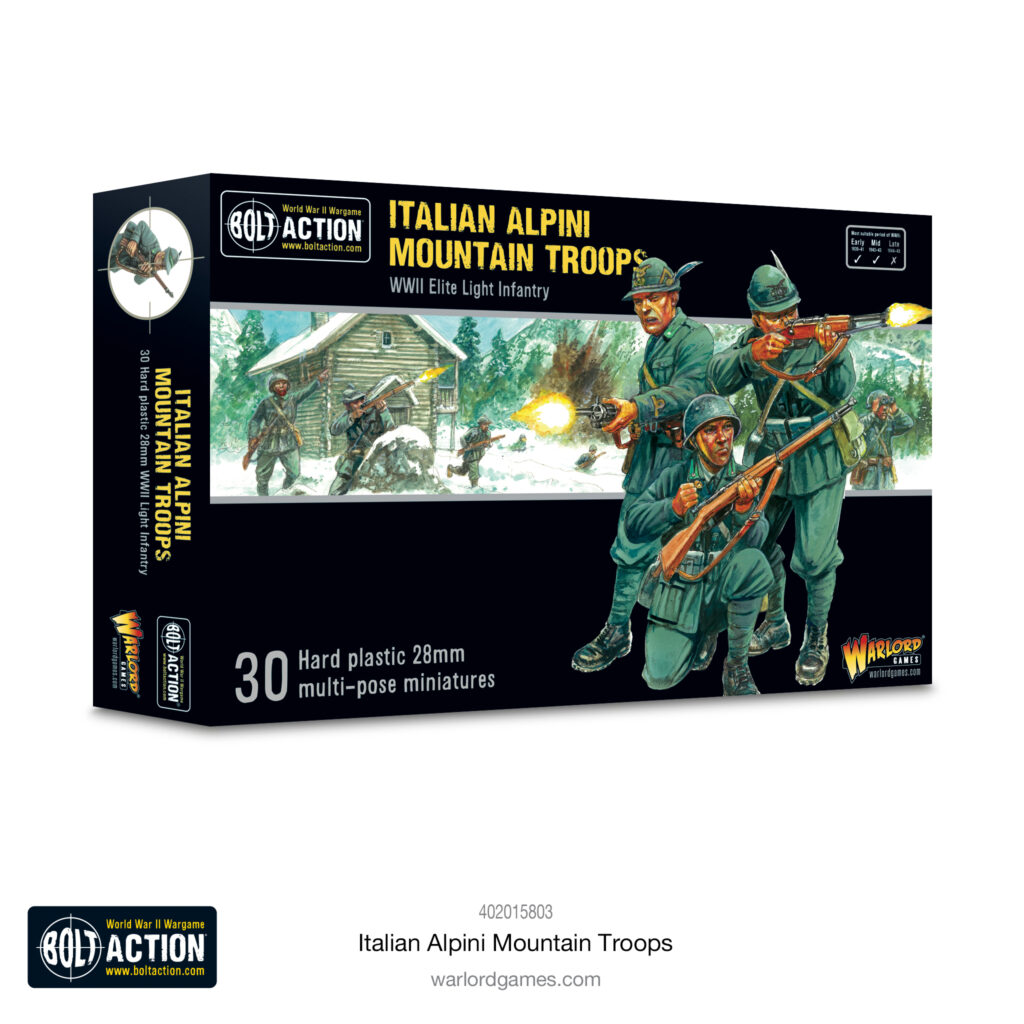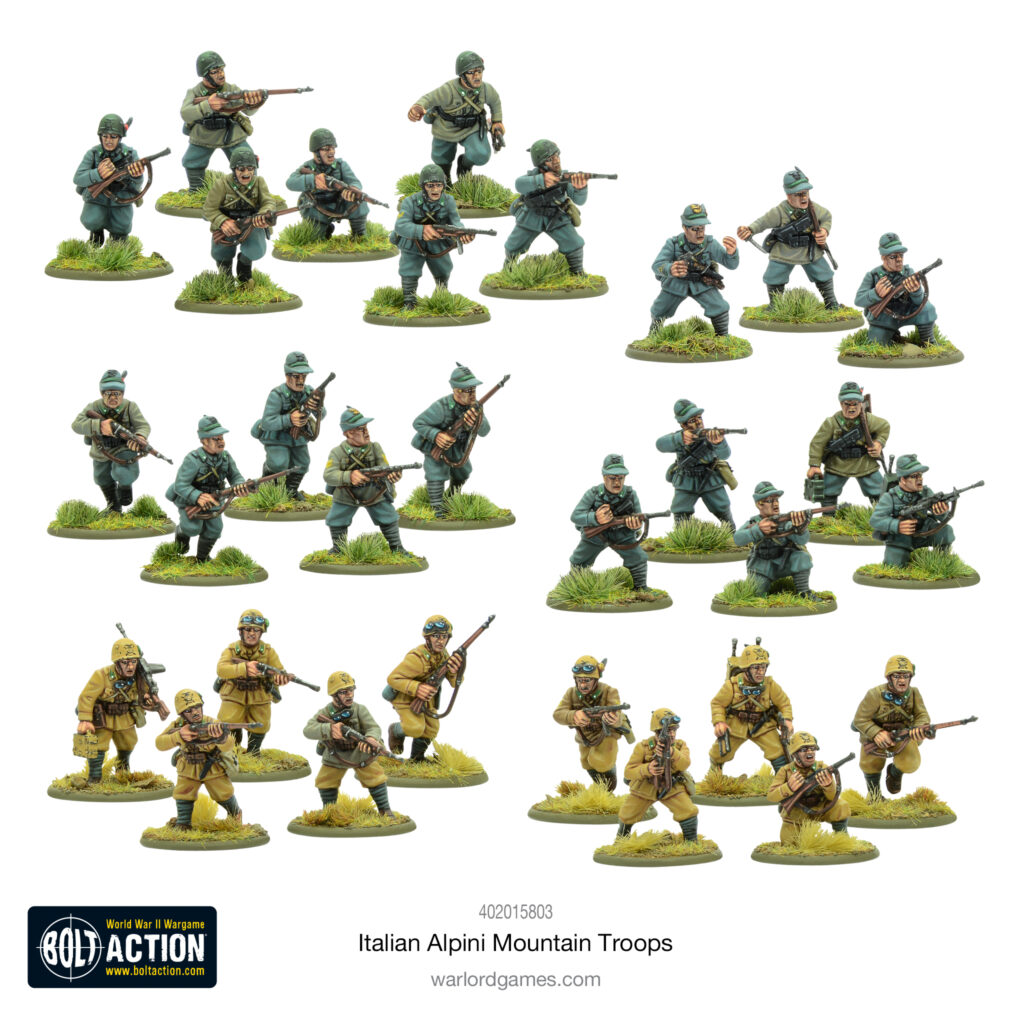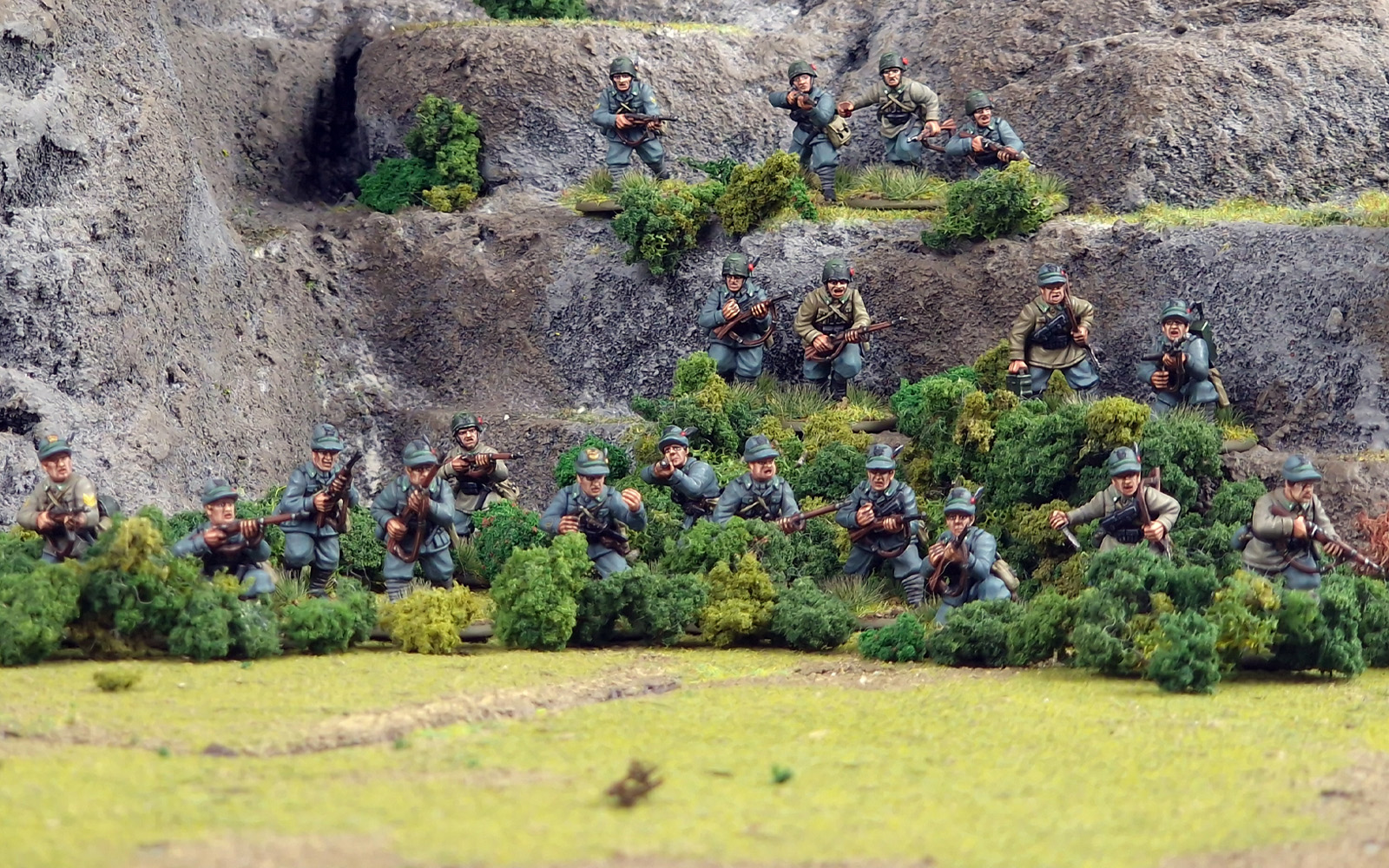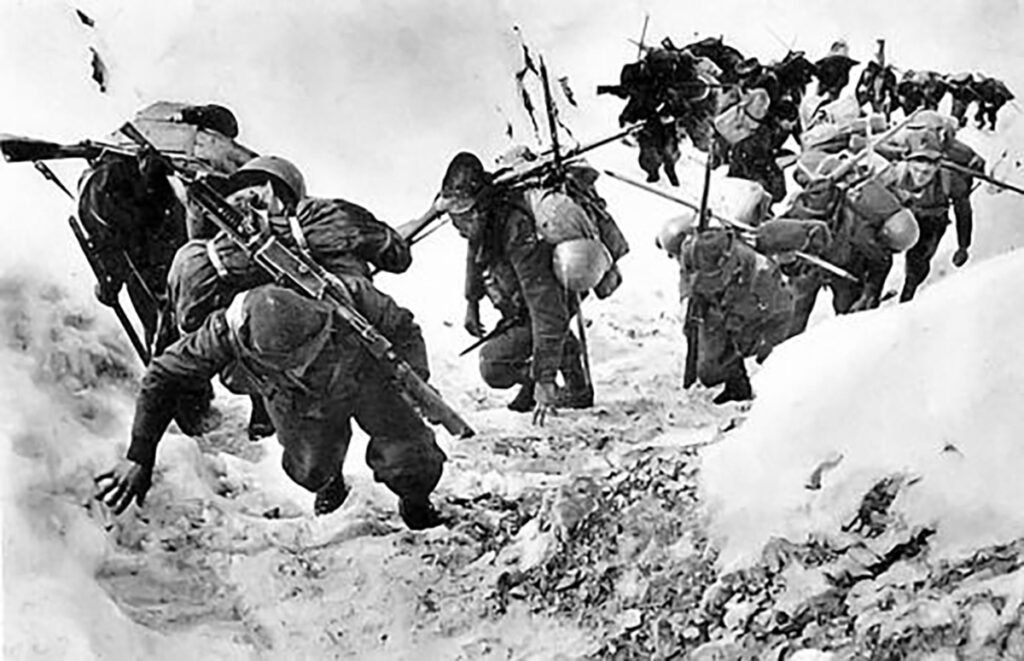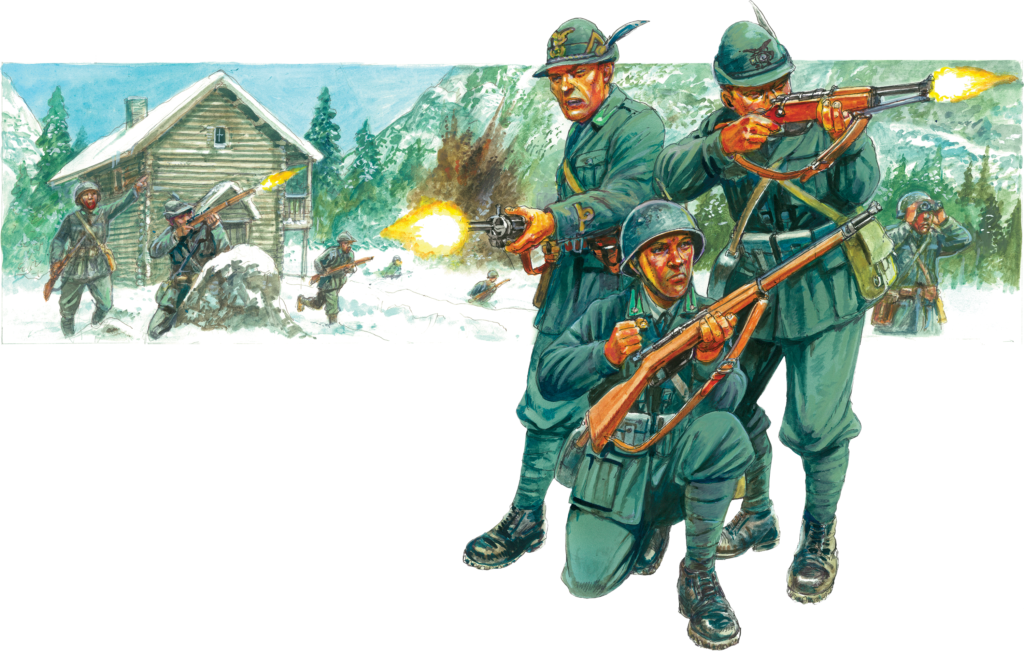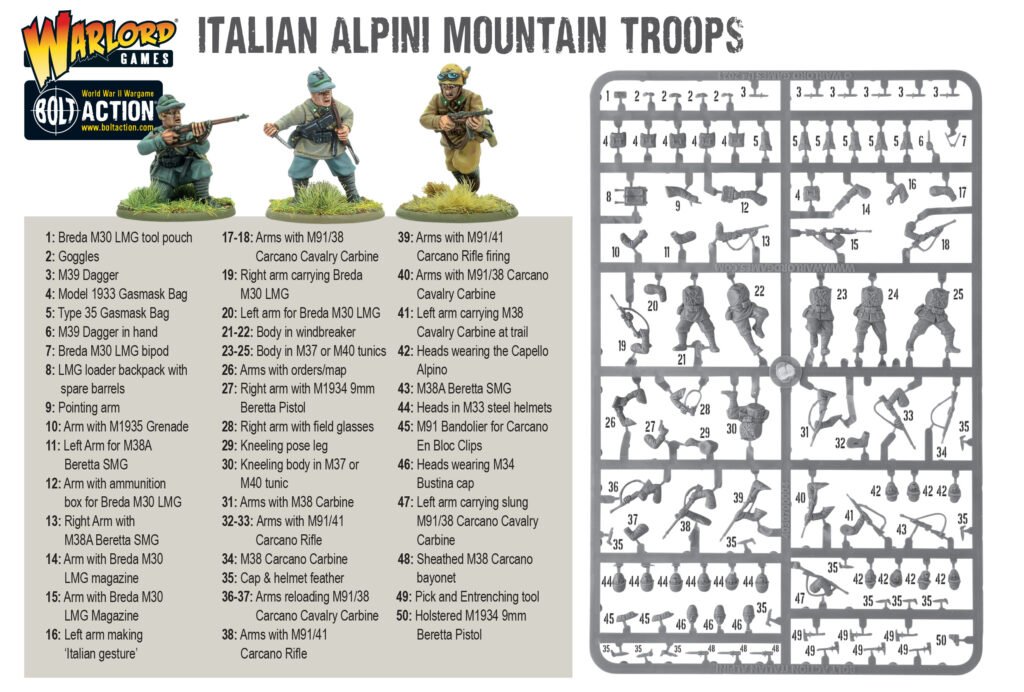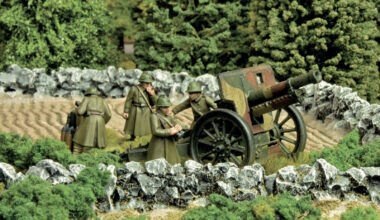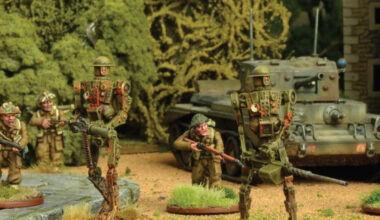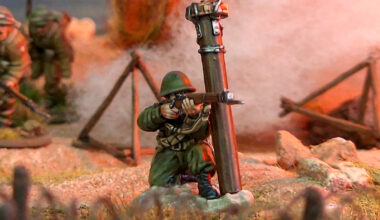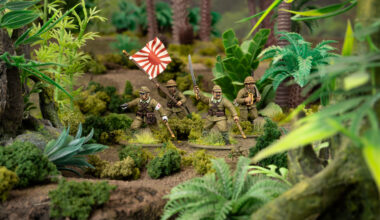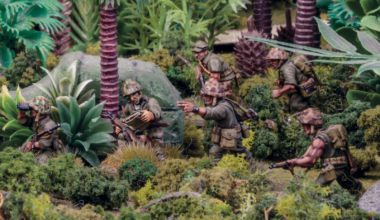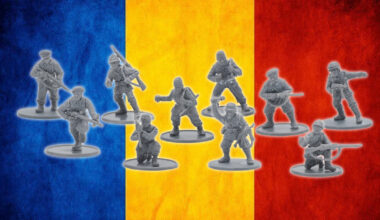Ever looked at a really big hill and thought ‘I bet that’d look great with a bunch of soldiers on top of it’? Then you’ve got something in common with the Italian military! Being a country well-blessed with mountains in its north, and having had something of a belligerent attitude towards its neighbours more or less since first being established, Italy was probably the earliest European adopter of specialist mountain troops. In 1872, the first Alpini units were formed, aptly named for the Alps which were intended to be their primary area of operations. Locally recruited from the areas they were intended to defend, the Alpini came from a mountaineering culture, with their native fieldcraft enhanced by a rigorous training programme that produced courageous, disciplined, and highly skilled mountain infantry, ideally suited for their harsh environment.
In the latter years of the nineteenth century, the Alpini would see foreign service in Africa and China in addition to their local defensive duties, but it was not until the First World War that they became truly legendary in status. Fighting a brutal war in the Alps against their German and Austro-Hungarian counterparts, they endured truly hellish conditions in what would become known as the ‘war in snow and ice’. Thousands were lost to avalanches and mines, and battles were fought in seemingly impossible places, often on near-vertical terrain. This conflict has to be considered the true foundation of much of the Alpini culture, and would define their character going forwards – proud, resolute, and courageous soldiers, willing to go anywhere and do anything. This tradition has continued ever since, and Alpini still serve with distinction in the modern Italian armed forces, maintaining their mountain warfare expertise.
During the Second World War, the fascist Italian state fielded six Alpini divisions, named for the regions in which they were raised and headquartered. These units were well-trained and well-supplied with both small arms and light vehicles, and highly-motivated with a strong esprit de corps. Many of the men were veterans of the Italian campaigns in Abyssinia (modern-day Ethiopia), and the Alpini were rightly considered some of the best troops available to Italian commanders, alongside their Bersaglieri and Paracadutisti comrades. Wearing the iconic black feather (penne nere) in their hats and on their helmets, Alpini participated in one of the first Italian actions of the war, the little-known invasion of southern France. This brief conflict, fought shortly before the Franco-German armistice, allowed Italy to extend its territorial influence north of the Alps, and served to blood many of the new troops.
As the war progressed, the Alpini would see action in Greece, the Balkans, the Soviet Union, and Italy itself. Many would spend the earlier part of the war on anti-partisan operations, while the Italian contribution to the Axis invasion of the Soviet Union was one of the more forgotten and under-appreciated formations of the war. After the Armistice of Cassabile in September 1943, the German forces occupying Italy began disarming and dissolving the local Italian forces – the Alpini were no exception, with the majority compelled to disband in late 1943. The 1st Alpini Division ‘Taurinense’, however, joined with Tito’s Yugoslav partisans en masse, fighting against the Axis forces as the ‘Garibaldi’ division. Some of the men of the 3rd and 4th Alpini Regiments would also go on to fight as part of Polish II Corps, using British weaponry and equipment.
Mussolini’s ambition to create a new Roman Empire would see the Alpini in some truly desperate and unusual situations, making them an interesting and unusual variation on an Italian force for Bolt Action – a fun modelling and painting challenge that can be fielded in almost any European or Mediterranean theatre! With Soft Underbelly and its upcoming sister Tough Gut campaign book and the new plastic boxed set, there’s never been a better time to go mountaineering! Based on the recent fantastic Italian infantry kit, the Alpini sprue is jam-packed with axes, knives, and all the kit you’ll need to wage war among the clouds, as well as a choice of heads in helmets (sensible) or the famous Cappello Alpino caps (fashionable) – of course, there are penne nere included for both!
On the Bolt Action tabletop, Alpini provide a great slightly ‘different’ option to fill the Veteran infantry niche, and are available to Italian players throughout the conflict. They can also be taken with skis (just in case you need to dominate that snow table at your local club), and keep an eye out for some goodies for them in Tough Gut as well! They also have really excellent hats, meaning they’re right at home in any Italian collection – it’s important to keep up appearances, after all!
